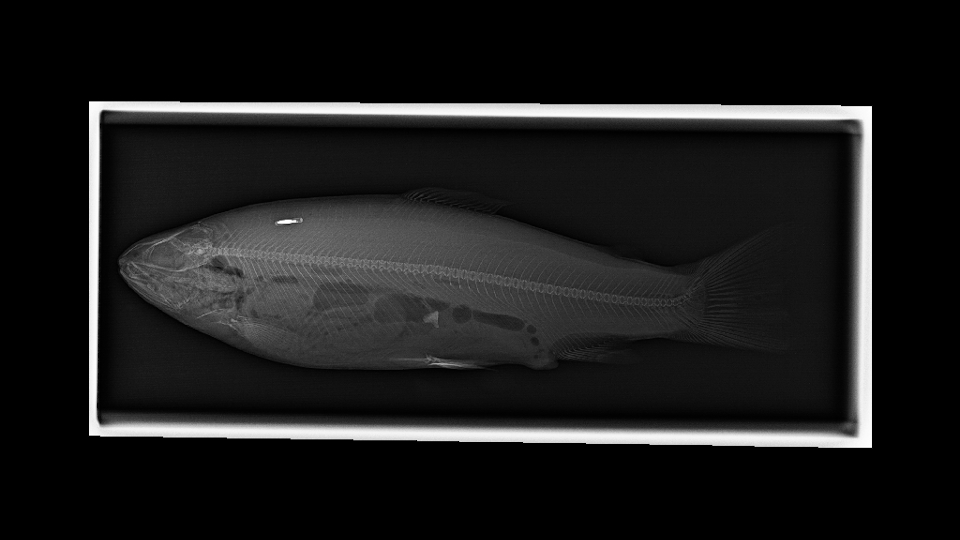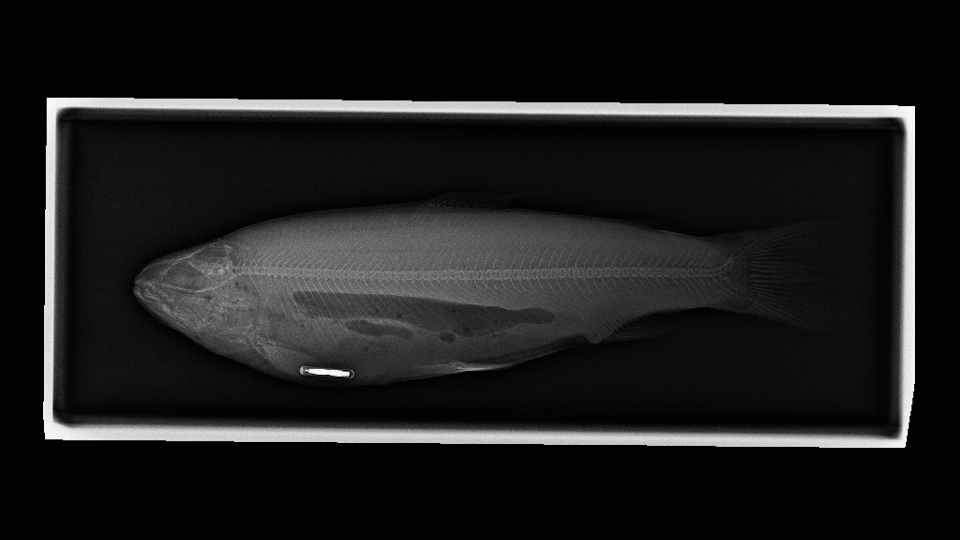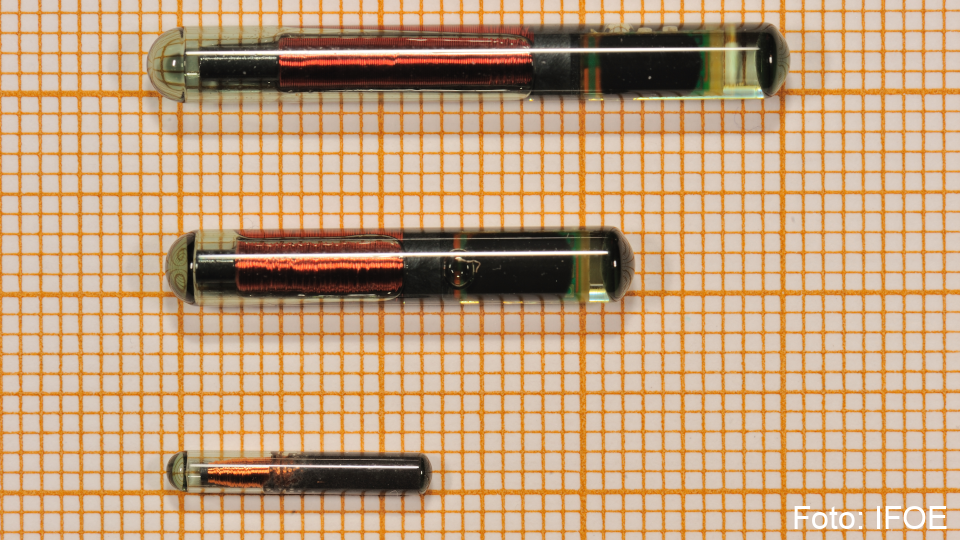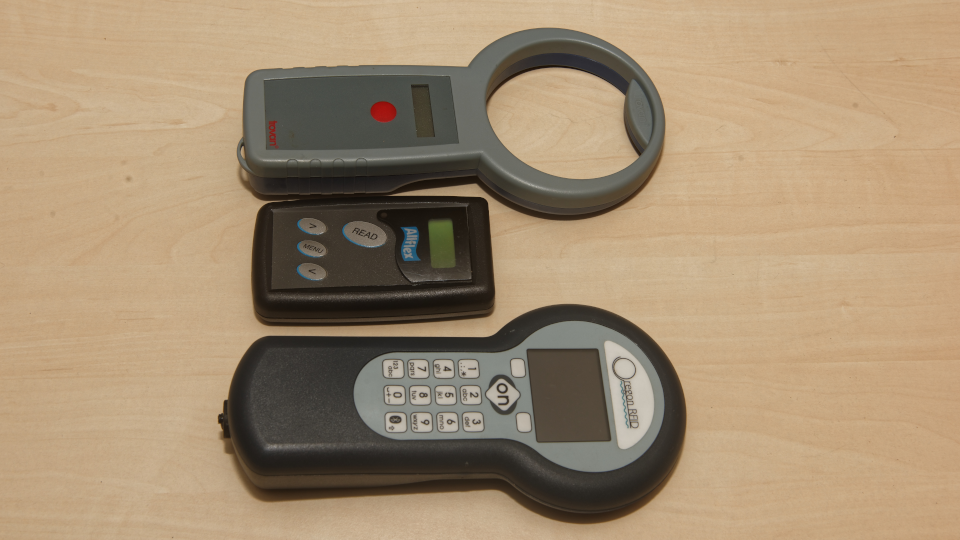PIT-Tag


Pic: IfOE
A fish with an internal Passive Integrated Transponder (PIT) tag cannot be identified by external inspection because these tags are injected into the body cavity or muscle or a study fish. Most commonly, the rod-shaped transponder is implanted into the body cavity and can be found when removing the viscera.
Eels and smaller fish may be tagged subcutaneously or intramuscularly with an extra-small PIT tag in the area between the head and dorsal fin.

Pic: IfOE
PIT-Tags are used in sizes of 8 x 1.4 mm, 12 x 2 mm, 23 x 3.9 mm and 32 x 3.9 mm. In general, the larger a fish is, the larger and more powerful the transponder it can carry.
Each PIT-Tag is encoded with a globally unique code which identifies the tagged fish for its entire lifetime. Even if the transponder is removed from the fish, it is possible to identify the individual’s unique code though a specialized digital scanner is required. Since two different transponder technologies are used (FDX = Full Duplex, and HDX = Half Duplex), a corresponding reader is required to read each of the respective codes.

Readers for PIT-Tag codes (Pic: IfOE)

Information on a fish marked with a PIT-Tag
Notable! Always pack a PIT securely and send it in by mail with the printed accompanying.
Send in a telemetric emitter as follow:
Use adhesive strip to attach the emitter to the corner of an envelope that is opposite the stamp.
PIT tags are often destroyed by the postmark so that they can no longer be read. For this reason, secure the PIT tag as follow:
- wrap the PIT tag in a tissue
- secure the small package in the corner of a padded or plain envelope that is opposite to the stamp.
If you know the difference between FDX and HDX tag you can choose these types here directly.

